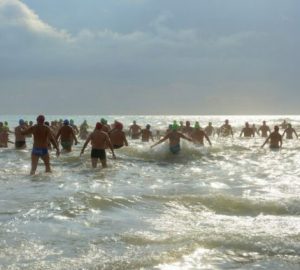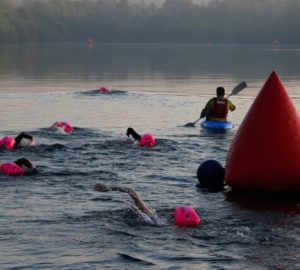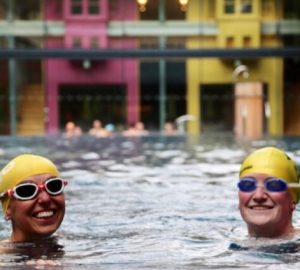Testing times
How often do you test how fast you can really swim? As long as you have no medical reason why not to, it’s a fun thing to do – in the slightly perverse sense of the word fun that I only expect swimmers to understand. But I know that some swimmers (and triathletes) embrace time trials and sprinting more readily than others, which is a shame as it’s something we should all do, whatever our absolute swimming speed.
As swimmers we benefit from being efficient and practising moving through the water cleanly and smoothly and without any wasted effort – but sometimes it’s good to swim as fast as you can, over a range of distances. Firstly, it feels amazing – at least it can do if you get your pacing right. Yes, it hurts, but it’s a good sort of pain that you’re in control of and which will evaporate as soon as you stop, leaving you gasping but glowing. Secondly, it’s motivational to see how much faster you can move when you really put the effort in to when you’re cruising in your comfort zone. Thirdly, it’s a useful fitness test and benchmark for your training. And finally, it’s just fantastic that we can push ourselves in this way. It’s something that people who don’t do sport don’t experience. The feeling of ploughing through the water as fast as you can is one reserved for those of us who swim.
Racing is the obvious occasion to push your speed limit, but in open water racing there are often other considerations. You might be better off conserving energy and drafting for example. I also find that until I can actually see the finish line and can judge exactly how far it is still to swim that I’m reluctant to commit to an all out effort. And often, by the time you get to the final stages of a race your position is already fixed. Neither sprinting nor easing off will make a difference to your rank and we’re rarely bothered by a few seconds plus or minus in open water so it’s tempting to cruise into the finish at a steady pace. It’s only when you’re in a head-to-head race for the finish line that you truly bust a gut to get there.
In a triathlon there is even less incentive to sprint as you need to conserve energy for the rest of the race. Because of this, some triathletes seem never to lift their pace, even in training.
Pool racing is then the obvious place to swim your absolute fastest. I am always amazed by how much faster I can swim in a race than in training. There’s something about standing on the starting block, lined up against other swimmers, with time-keepers and officials looking on, that sets the heart racing. It’s also the knowledge that you don’t have to hold back for anything. Your coach is not going tell you to do it again 10 seconds after finishing. When you hit the wall you want it to feel like it was the last stroke you could take. You expect to be too out of breath to talk, for your arms and legs to have turned to jelly and your stomach to be convulsing (but please don’t vomit, however much you feel like it, as then the pool will need to be cleared). When you get out your arms and legs will be shaking and your head buzzing. And you’ll feel fantastic.
Obviously pool racing is not for everyone but you can get close to the same thing in a training session if you approach it with the right mindset.
A good test (and one which I did the other day, triggering this post – thanks to Fiona Ford) is a series of three time trials of 400m, 200m and 100m, with plenty of rest between them. When you swim the 400m, don’t hold anything back for later but make it the fastest 400m you can. Pace it right so that you can ramp up the effort over the second half and finish with an all-out max-effort head-down sprint. You will suffer, but in a good way. For the first few minutes you will wonder how you will find the strength even to lift your arms enough to do a recovery swim. Lie on your back and gently kick your legs until you can move your arms again and then swim a few lengths really slowly. Then do the same for the 200m and 100m. Somehow you will find the energy to swim each at faster pace than the preceding one. Afterwards you will be shaking. It will take you much longer than usual to shower and change and you will feel great. You can also use your 400 and 200m times to calculate your Critical Swim Speed (CSS) to use in training as recommended by Swim Smooth, among other coaches.
On another occasion, try swimming your fastest half length, your fastest 25m, 50m and 1500m. Every distance feels different and affects you in a different way. Try them all over a period of a few weeks and notice the differences. The shorter distances – possibly up to 100m – can probably be fitted into regular training sessions. For the others you might have to dedicate a specific slot.
I know swimmers often groan when coaches ask for a time trial. If that’s you, embrace it instead. It’s privilege to push our bodies hard. If anyone asks why you swim until your lungs are bursting and your arms fill with lead, the answer is… because I can.






